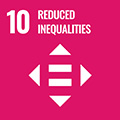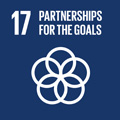- Docente: Rachele Maria Fioritti
- Credits: 9
- SSD: L-LIN/07
- Language: Italian
- Teaching Mode: Traditional lectures
- Campus: Bologna
- Corso: Second cycle degree programme (LM) in Language, Society and Communication (cod. 8874)
-
from Feb 10, 2025 to May 15, 2025
Learning outcomes
The course aims at introducing contemporary theoretical debates in Translation Studies, and at providing the students with the methodologies and the tools necessary to translate different text-types. Students are expected to be aware of how translation is not only a linguistic operation, but also a cultural one. Lectures will provide an overview of scholarly research on translation, with particular attention to contemporary cultural-linguistic perspectives especially those of Spanish-speaker scholars. The students are expected to become expert in the translation, from Spanish into Italian and from Italian into Spanish, of different text-types: specialized (e.g., in the social sciences); semi-specialized (e.g., popular science and business in press magazines; tourist guides), and literary, and become aware of the problems encountered and the strategies employed. They are made familiar with the inextricable text-context connection, the professional task of the translator, his/her identity, visibility and ethics, the role of the commissioner, the purpose/function of a translation, the main types of translation and of translation strategies. They are also made aware of methodologies to solve problems arising, e.g., from cultural differences, linguistic varieties and language for specific purposes. Language classes aim at improving students linguistic competence; over the two year period students knowledge of Spanish should reach an equivalent level to C2 in accordance with the European framework in all four abilities. These classes will work in connection with the lectures to improve students writing skills in particular.
Course contents
The course is structured as follows:
1) Lectures (lezioni frontali), held by prof. Rachele Maria Fioritti (60 hours)
2) Language learning course (esercitazioni), held by language expert Libertad Graterol Navarrete (36 hours).
Lectures
The course (60 hours) comprises:
- A theoretical module of introduction to translation (history and theories of translation, the translator's job, translation strategies, etc.), with a focus on translation in the Hispanic context. A reflection on the future of translation will also be offered, presenting the innovations and limits of machine translation, computer-assisted translation (CAT) and post-editing.
- A practical module of translation of texts from Italian into Spanish and from Spanish into Italian. The practical work in class aims to raise awareness of translation processes, the role of the translator, the semiotic dimension of language and its transmission; it also aims to provide students with a methodology for dealing with the translation of texts belonging to different text types and translation genres, with particular attention to audiovisual translation. In view of the C2 level of competence to be reached at the end of the two-year course, the texts proposed will cover a wide range of the diatopic variation of the Spanish language.
Language learning course
During the language learning course (36 hours), practical exercise will be done on specific linguistic aspects directly related to the content covered in the lectures (specialised languages, textual genres, etc.), enabling the students to achieve an excellent command of the language, so that they can make the most of the course content and translation practice.
Readings/Bibliography
Lectures
Compulsory readings:
García Yebra, Valentín. "Ideas sobre la traducción y problemas de traducción literaria". Équivalences, 12e année-n°1 (1981): 1-13.
García Yebra, Valentín. "Problemas de la traducción de lenguas románicas al español", Traducción. Historia y teoría. Madrid: Gredos, 1994.
Zabalbeascoa, Patrick. "La traducción de textos audiovisuales y la investigación traductológica". La traducción en los medios audiovisuales. Publicacions Universitat Jaume I, 2001.
Minervini, Rosaria. "La traducción automática español-italiano del turismo enogastronómico: un estudio de caso." Cuadernos de Lingüística Hispánica 42 (2023): 1-20.
Complementary readings:
Hurtado Albir, Amparo. Traducción y traductología: Introducción a la traductología. Cátedra, 2016.
García Yebra, Valentín. Teoría y práctica de la traducción, Madrid, Gredos, 1984, I, 29-43.
Carlucci, Laura, y Ana María Díaz Ferrero. "Falsas equivalencias en la traducción de lenguas afines: propuesta taxonómica." Sendebar 18 (2007): 159-190.
Eco, Umberto. Dire quasi la stessa cosa: Esperienze di traduzione. Bompiani, 2003.
Galiñanes Gallén, Marta. "La traducción de los colores en italiano y en español." RedELE: revista electrónica de didáctica español lengua extranjera (2005).
Mayoral Ascensio, Roberto. "El espectador y la traducción audiovisual". La traducción en los medios audiovisuales. Publicacions Universitat Jaume I, 2001.
Muñoz, A. Pablo Zamora. "Análisis contrastivo español-italiano de expresiones idiomáticas y refranes." Paremia 5 (1996): 87-94.
Acuña, Estefanía Flores. "La traducción de los marcadores del discurso en italiano y español: el caso de insomma." Trans: revista de traductología 7 (2003): 33-45.
Trovato, Giuseppe. "La traducción español-italiano de tipologías textuales semi-especializadas: planteamiento contrastivo, discursivo y didáctico". Entreculturas 9, febrero 2017.
Ghignoli, Alessandro, y Montabes Ortiz, África. "La traducción y los géneros periodísticos". Mutatis Mutandis: Revista Latinoamericana de Traducción 7, Nº. 2 (2014): 386-400.
Venuti, Lawrence. Strategies of translation. In M. Baker (ed.), Routledge Encyclopedia of Translation Studies. London & New York: Routledge (2001): 240.
Note: Any additions and/or changes will be communicated during the course.
Language Learning course
Please, find the details on the dedicated page.
Teaching methods
Lessons will be held with a dynamic and interactive communicative approach: students are invited to actively participate and intervene (in Spanish) during the lessons, both individually and in the group work that will be proposed.
Teaching is action-oriented and aims to stimulate active and cooperative learning, with a practical approach that favours inductive methods.
Assessment methods
The final grade for the Translation Spanish examination will be calculated by 2/3 the grade obtained in the lectures and 1/3 the grade obtained in the examinations of the practical exercises (Esercitazioni).
The assessment of the lectures will be the result of a written examination, made up of a part of questions aimed at verifying the learning of the theoretical notions, and a practical part of translation (from Spanish into Italian) of one of the text types studied during the course.
Note: In order to be admitted to the lectures' exam, it is necessary to have passed the language practice (esercitazioni) exam, which counts for a 1/3 on the final assessment (details on the page dedicated to the language practice course).
There are no differences in the syllabus or in the exam between attending and non-attending students.
Teaching tools
PPT presentations, articles and materials will be made available on Virtuale.
Teaching is inclusion-oriented, it involves the use of numerous multimedia resources such as digital texts, audio and video formats, images and tables to complement the written texts.
Students who require specific services and adaptations to teaching activities due to a disability or specific learning disorders (SLD), must first contact the appropriate office: https://site.unibo.it/studenti-con-disabilita-e-dsa/en/for-students
Office hours
See the website of Rachele Maria Fioritti
SDGs




This teaching activity contributes to the achievement of the Sustainable Development Goals of the UN 2030 Agenda.
